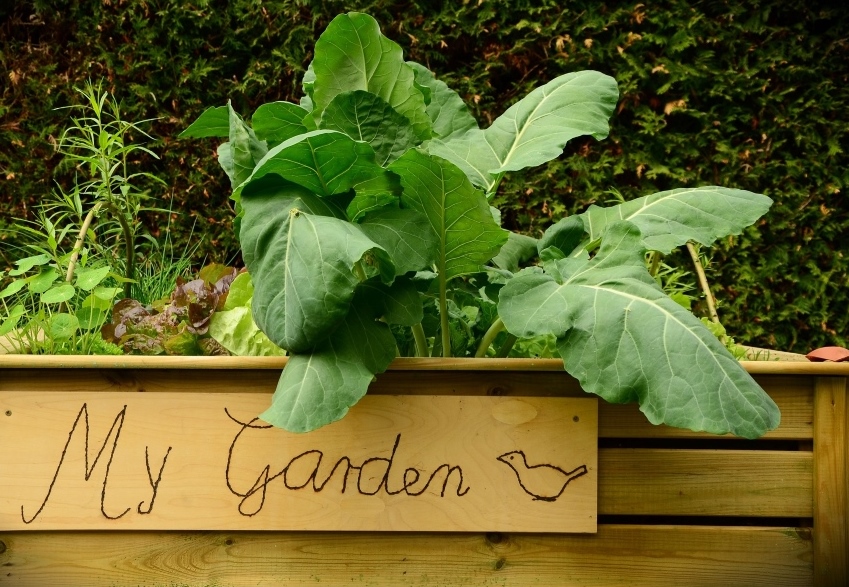January 18, 2018
How to Build A Raised Vegetable Garden With Landscape Timbers


There you have it. Did you find this guide helpful? Feel free to drop a comment.
Building a raised bed for a vegetable garden brings many benefits both for your vegetable patch and for you as well.

For example, the vegetables will be better nourished because you can fill the bed with a far richer soil than what would be found naturally in the ground. Furthermore, if you have any difficulties like lower back pain or arthritis in the knees, a raised bed will make you life easier since you won’t need to bend down as far to do your gardening.
The following is a step-by-step guide for how to build a raised vegetable garden with landscape timbers.
The Guide
Before starting the process of building your raised vegetable garden, you will need to ensure you have the space in your yard to do so, and you will need the following items:
- Landscaping timber (6 x 6, 4 ft long) x6
- Landscaping timber (6 x 6, 8 ft long) x6
- 10-inch timber screws
- Wheelbarrow
- Shovel + trenching shovel
- Gravel
- Hoe
- Drill + drill bits
- Sledgehammer
- Metal rebar (0.5 inches wide, 12 inches long) x12
Step 1 - Setting the Trench Boundaries
First, collect 2 pieces of your 4-ft long timber, and 2 pieces of the 8-ft long timber.
Place them on the ground in the area of your garden that you want to be your elevated vegetable patch. Use them to form a rectangle on the ground – the interior of your rectangle will be the vegetable bed.
Go ahead and mark both the inner perimeter and the outer one using a shovel or spade. Remove the timber, and you should see 2 concentric rectangles drawn on the ground; these are the boundaries of your trench.
Step 2 - Digging the Trench

Get to work digging a trench in the area between the 2 concentric rectangles on the ground. The depth of the trench should be approximately 6 inches to help support the walls of your raised bed.
The soil you collect should be placed in your wheelbarrow, then you should pour a 2-inch deep layer of gravel all the way around your trench.
Step 3: Laying Down the Timber
Insert the 4-ft and 8-ft pieces of timber into the trench, lining up the corners to make them join together in order going clockwise.
Next, use your drill to make 1/2-inch holes in the wood, with 2 ft between each hole.
Grab one of your rebar and pound it through a hole and into the soil using the sledgehammer. Keep hammering it in until the end of the rebar is level with the timber. Repeat this process for every one of the holes.
Position more 4 and 8 ft landscaping timbers onto the ones you just laid down at ground level, ordering them anti-clockwise this time. You will be joining this layer to the one below with 5 timber screws along each side – make sure you distribute the screws evenly.
Step 4 – Drainage
Use your drill to make some holes (1) through the sides of that second layer of landscaping timber. You want these holes to be around 1/2-inch wide. Drill just a single hole on the 4-ft sides of the frame, and drill 2 holes on the 8-ft sides.
Step 5 – Finishing Up
Position the final pieces of timber on top of the 2nd layer of your frame. Once again, lay these ones in a clockwise order.
Use the timber screws in the same way as with the last layer to secure the landscaping timbers in place at the top of your frame.
Now, simply fill the frame with the right type of soil, and you are ready to begin planting your vegetables in your new raised bed.
There you have it. Did you find this guide helpful? Feel free to drop a comment.
Posted by: Home Improvement Tools at
07:44 PM
| No Comments
| Add Comment
Post contains 642 words, total size 6 kb.
15kb generated in CPU 0.0082, elapsed 0.0353 seconds.
35 queries taking 0.0306 seconds, 51 records returned.
Powered by Minx 1.1.6c-pink.
35 queries taking 0.0306 seconds, 51 records returned.
Powered by Minx 1.1.6c-pink.









